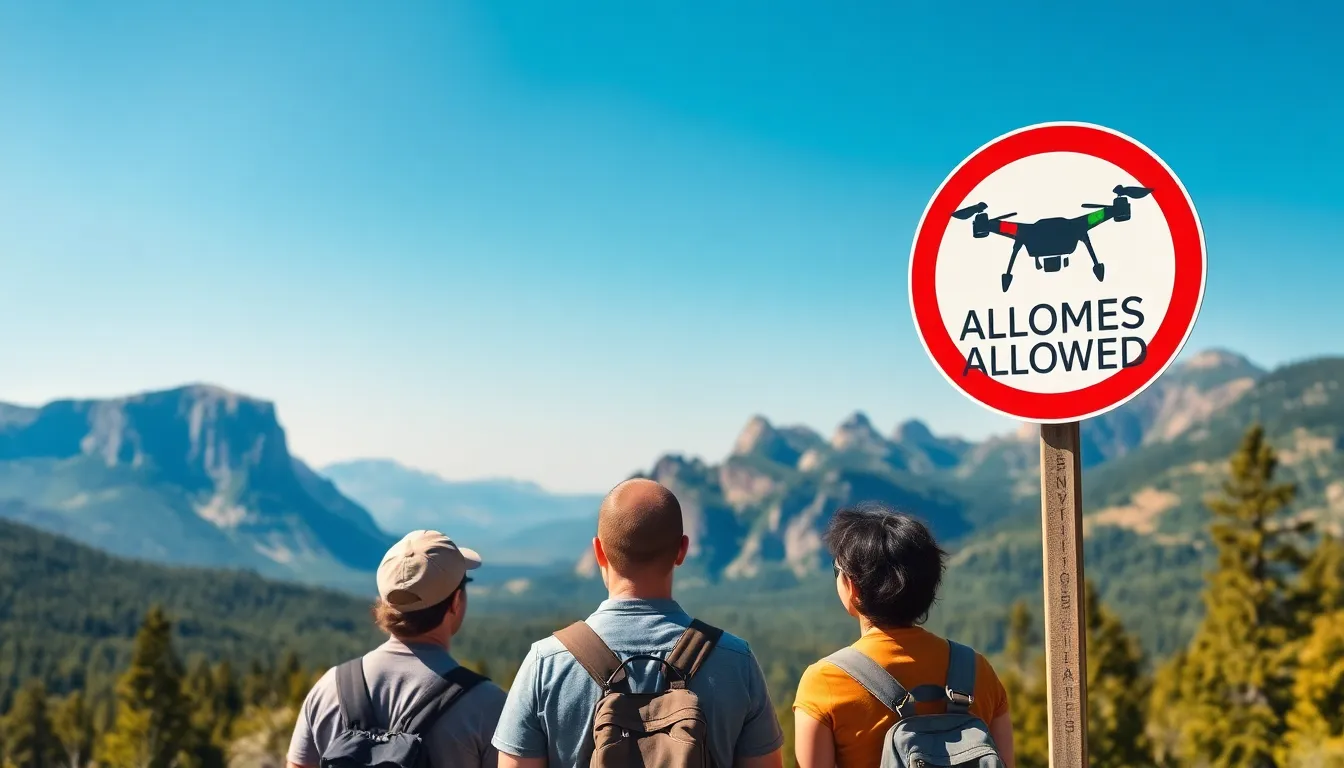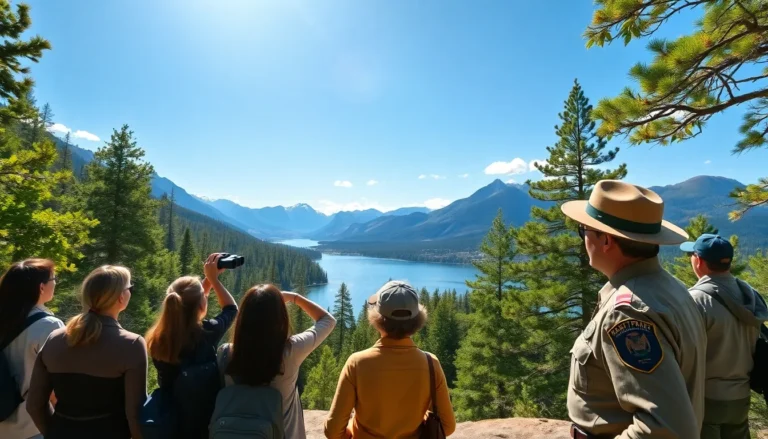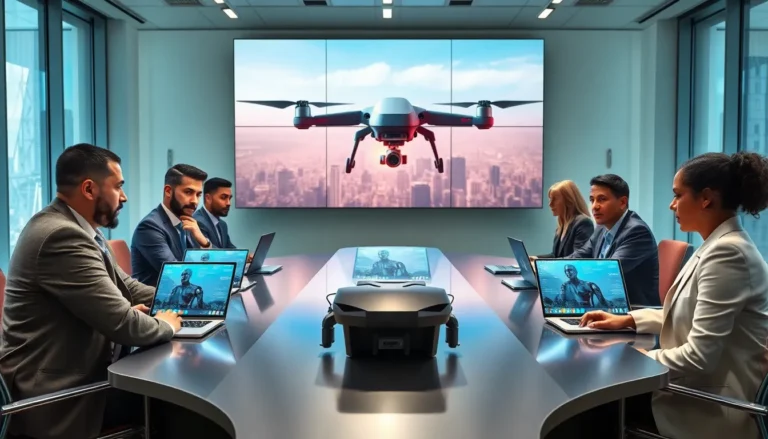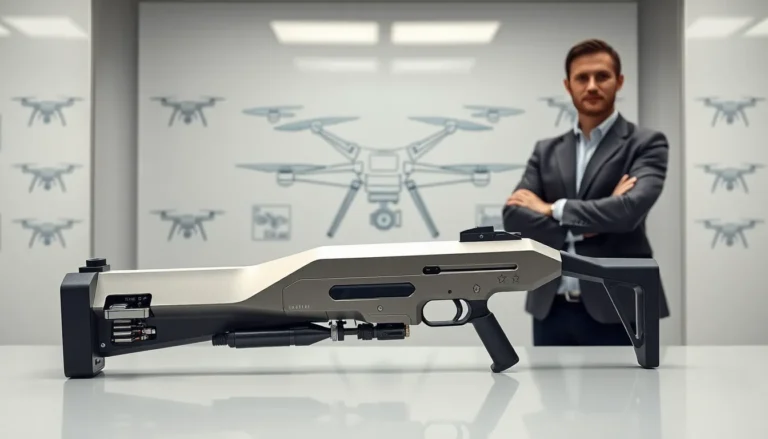Table of Contents
ToggleEver tried to capture nature’s beauty with a drone, only to realize you might be flying into a web of regulations? The allure of soaring over towering trees and crystal-clear lakes may come with a hefty fine, or worse. If you’re wondering whether you can unleash your drone in national parks, buckle up. This guide will navigate the skies of federal regulations, specific park rules, and why skipping the drone might save you from becoming the latest headline. Let’s jump into the world of drone laws and have a laugh while we’re at it.
Overview Of Drone Regulations In National Parks

Drones have exploded in popularity, transforming the way we capture and share our adventures. But, with great power comes great responsibility, or at least a slew of regulations. When it comes to national parks, the uncomplicated answer is no, drones are generally not allowed. The overarching aim is to preserve the natural environment and foster a harmonious experience for all visitors. Nonetheless, there are nuances to uncover.
The National Park Service (NPS) prohibits drone usage across nearly all national parks. This policy aims to protect wildlife, natural resources, and visitor experiences. The tranquility of parks is essential, and drones can disrupt the peace, creating disturbances that frustrate both wildlife and fellow visitors. So when wandering through the sweeping landscapes of Yellowstone or the majestic formations of Zion, it’s best to keep your drone grounded.
Federal Regulations Governing Drone Use
The Federal Aviation Administration (FAA) holds the reins when it comes to airspace regulation, including drone use. All drone operators must adhere to FAA rules, which encompass registering drones and flying them under certain altitude limits. Fun fact: while you may think you have a bird’s-eye view, the FAA limits drones to an altitude of 400 feet.
Besides, drone operators must follow the rules of the airspace in which they fly. Restricted zones typically surround airports, military bases, and various other locations. When it comes to national parks, the NPS abides by the FAA’s guidance while also establishing its own specific regulations for areas under its jurisdiction. So, understanding both FAA rules and NPS policies is vital.
Specific National Park Policies
Each national park can create its unique policies concerning drone use, which must comply with larger federal regulations. An example worth noting is the Grand Canyon, where drone flights are strictly forbidden. Other parks enforce regulations that prohibit flying in certain areas, while allowing it in others. For instance, in areas like the Channel Islands, some restrictions could be lifted with proper permits.
For those considering a drone adventure, it’s a good practice to research the specific park regulations beforehand. Visiting the NPS website or even contacting park rangers can provide clarity. Misunderstanding or ignoring these rules could lead to unnecessary headaches.
Consequences Of Violating Drone Regulations
So, what happens if someone decides to ignore the regulations and flies their drone in a national park? The consequences can be severe. Individuals caught operating drones in prohibited areas can face fines that might leave them questioning their financial priorities. Fines can range from a couple of hundred bucks to over $1,000.
Beyond monetary penalties, violators risk having their equipment confiscated. One minute you’re capturing stunning vistas, and the next, your drone is snagged by park authorities. The repercussions aren’t just about the money: destroying the delicate balance of nature or disturbing wildlife can lead to longer-term consequences for the environment. Respecting regulations is vital to preserving these breathtaking areas.
Permits And Exceptions For Drone Use
While national parks generally prohibit drone use, a glimmer of hope exists in the form of permits and exceptions. Specific research or educational projects may receive permission for drone operation. But, acquiring these permits can be a challenging process and isn’t something that can be requested on a whim.
Potential applicants must often justify why their drone usage aligns with park goals. The application may include detailing the intended flight paths, mission objectives, and even potential impacts on wildlife and visitors. If an individual has a valid reason, they might find themselves soaring over breathtaking landscapes with proper documentation.
Impacts Of Drones On Wildlife And Visitors
The thrill of technology often overshadows its impact on the natural environment. Drones, while exciting, can have detrimental effects on wildlife behavior and visitor experiences. Birds may flee from the noise and presence of drones, disrupting nesting and feeding habits. Also, a peaceful hike can easily turn chaotic when buzzing drones invade the serene atmosphere.
The social dynamics of national parks mean that not everyone enjoys the same experiences. Some visitors might appreciate the novelty of drones, while others find them intrusive. Preserving harmony among park-goers should always take precedence. Striking a balance between modern technology and nature’s tranquility is essential.







